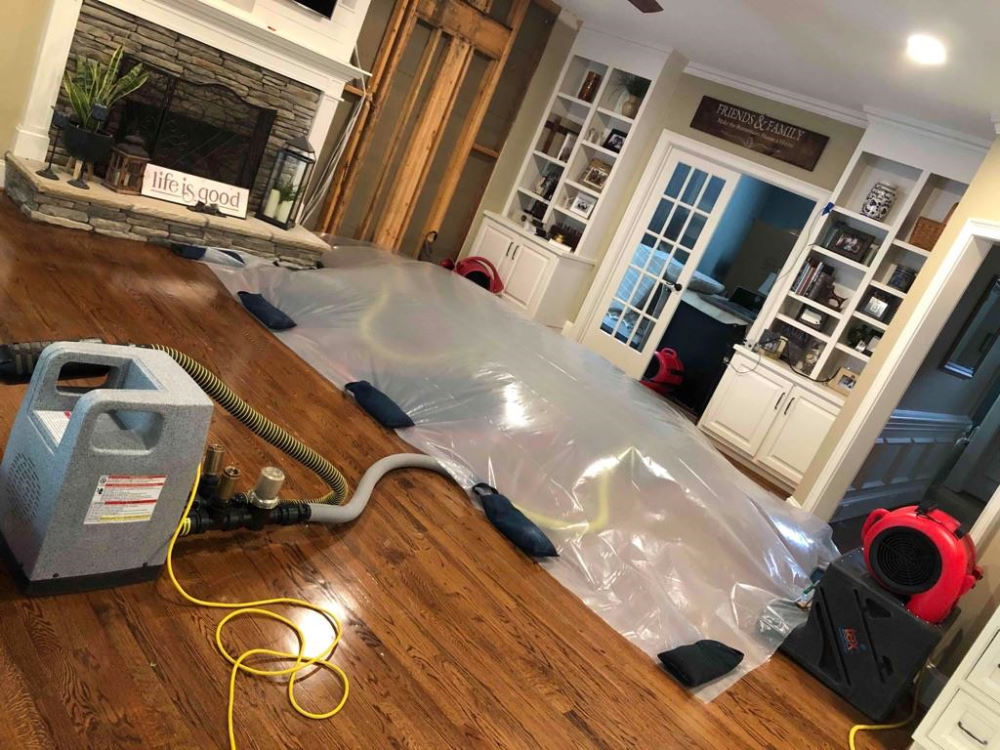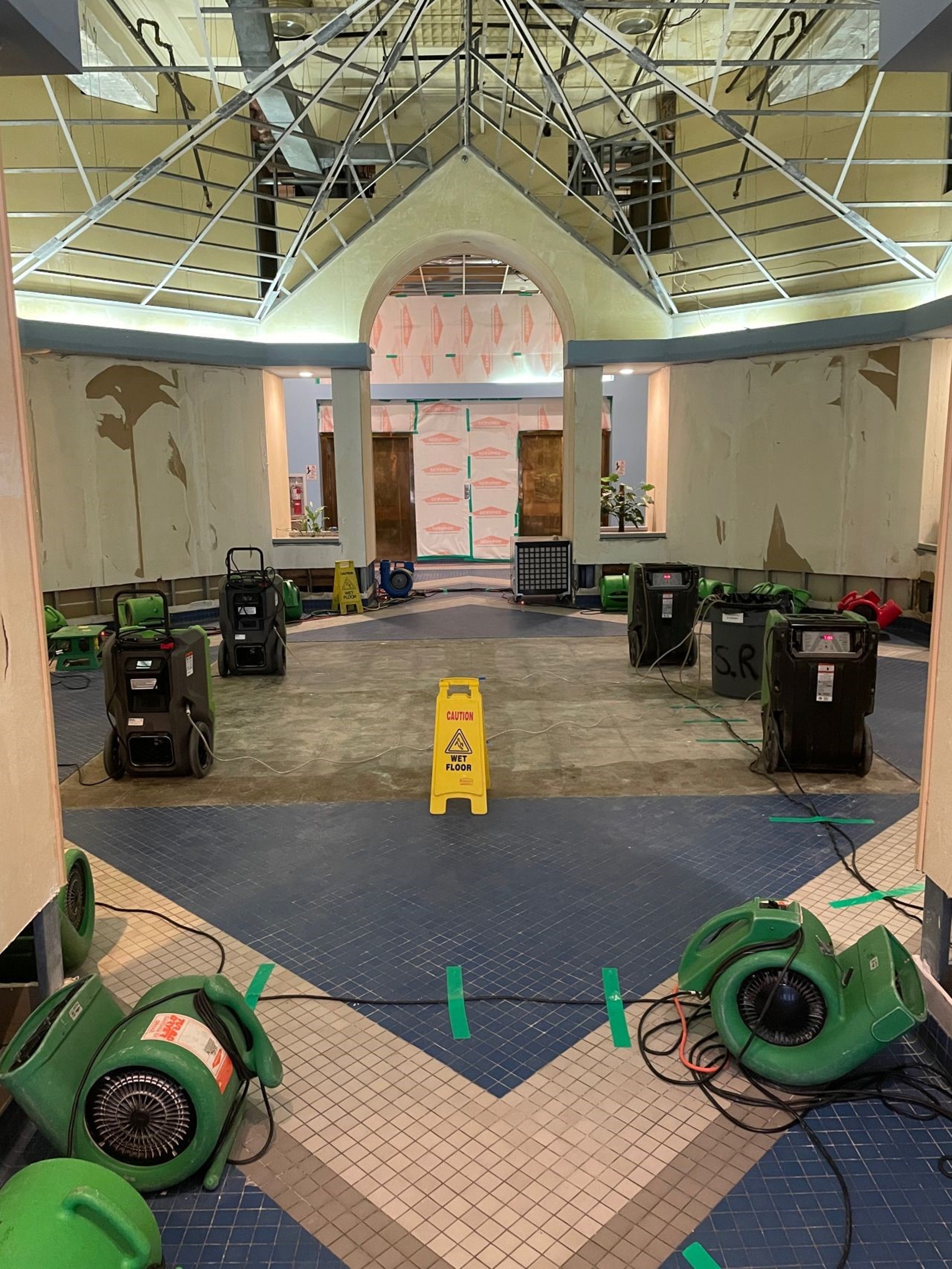Swift Water Damage Restoration Philadelphia: Your Relied On Recuperation Companion
Swift Water Damage Restoration Philadelphia: Your Relied On Recuperation Companion
Blog Article
Emergency Water Damage Restoration: Swift Reaction to Decrease More Damage
Water damage can strike all of a sudden and leave destructive results on companies and homes. When encountered with such a situation, a quick action is essential to minimize more damages and stop potential health and wellness risks. What specifically does emergency water damage reconstruction require? In this discussion, we will look into the relevance of immediate action, the evaluation process, the actions included in water removal and drying out, mold prevention and removal, and eventually, the repair of the afflicted location. By understanding the seriousness and comprehensive nature of this process, you will certainly obtain important understandings right into just how experts tackle emergency water damage, guaranteeing a swift and effective feedback.
Relevance of Swift Response
Swift feedback is of utmost significance in water damages repair to decrease further damage and mitigate possible risks. When water damages occurs, whether due to a burst pipe, an all-natural disaster, or any other unexpected occasion, time is essential. The longer water beings in a structure, the more damages it can trigger. This is why it is critical to act swiftly and successfully to get rid of the water and start the repair process.
One of the primary reasons speedy reaction is crucial in water damage reconstruction is to avoid the development of mold and mold. Mold not only triggers additional damages to the structure of the building but additionally poses wellness risks to owners.
Furthermore, a punctual action can assist salvage and restore useful belongings and ownerships - leak detection philadelphia. Water damage can be devastating, especially when it influences personal items of financial or emotional value. Acting promptly enables specialists to analyze the damages and carry out suitable reconstruction techniques to salvage as high as possible. This not just helps to decrease financial losses but additionally brings satisfaction to those impacted.
Analyzing the Extent of Damage

Throughout the evaluation, remediation professionals thoroughly analyze the afflicted area to recognize noticeable signs of damages, such as water stains, warped products, and mold development. They also use customized equipment to spot concealed damage, such as moisture meters and thermal imaging cameras. This extensive examination allows them to accurately determine the degree of the damages and establish a tailored reconstruction plan.
Examining the level of water damages is essential since it aids experts prioritize their efforts. They can identify areas that call for instant focus, such as standing water removal and drying out, to stop more damage and lessen the danger of mold development. They can also identify the locations that require repairs or replacement, making sure that no damages goes undetected or untreated.

Water Extraction and Drying Process
The water extraction and drying process is a vital action in water damage repair, as it involves the removal of excess water and the complete drying out of check out this site the affected location to avoid further damages and reduce the risk of mold and mildew growth. After evaluating the extent of the water damage, the following step is to extract the water from the afflicted location.
When the excess water has actually been drawn out, the drying out process begins. This step is vital in protecting against second damages, such as architectural damages and the growth of mold and mildew. High-powered fans and dehumidifiers are additional resources utilized to distribute air and eliminate moisture from the air and surfaces. The drying procedure might take several days, depending on the level of the water damages and the products entailed.
It is necessary to make sure that the afflicted area is entirely dry prior to waging any repairs or restoration. Failure to completely dry the location can bring about long-lasting problems, consisting of damaged structures, moldy odors, and the growth of mold and mildew and mold. Specialist water damages restoration firms utilize moisture detection tools to ensure that the damaged area is entirely dry before continuing to the following step.
Mold And Mildew Prevention and Removal
Reliable mold prevention and remediation are vital in water damage remediation to guarantee the safety and security and stability of the damaged area. water damage restoration philadelphia. When water damage happens, whether from a burst pipeline, flooding, or a dripping roof, it creates a suitable environment for mold growth. Mold can start to establish within 24 to 2 days after water damages, and if left untreated, it can spread out swiftly and create significant health threats
To avoid mold and mildew development, it is vital to attend to water damages promptly. The very first action is to recognize and fix the resource of the water intrusion.
In cases where mold development has currently occurred, removal is essential basics to eliminate the mold and mildew and prevent its return. This involves the mindful elimination and disposal of damaged products, such as drywall or rug, to guarantee that all traces of mold and mildew are eradicated. It is essential to note that mold remediation need to be executed by specialists that have the needed training and devices to safely handle and remove mold.
Restoring the Affected Location

Firstly, it is vital to completely dry the area to protect against any kind of more damages and to hinder the development of mold and mildew and mold. This might include using specialized drying devices, such as dehumidifiers and industrial-grade fans, to get rid of all moisture from the damaged surfaces.
As soon as the area is entirely dry, the remediation procedure can begin. This may entail replacing or fixing harmed structural aspects, such as drywall, ceiling, or floor covering ceramic tiles. It is very important to address any underlying issues that might have created the water damage, such as leaky pipes or damaged pipes, to stop future events.
Furthermore, restoring the affected location may also consist of painting walls, changing damaged fixtures, and extensively cleaning and sanitizing the room. This makes sure that not only is the location structurally sound, yet it is likewise aesthetically pleasing and secure for occupancy.
Conclusion
In verdict, quick response is critical in lessening further damages caused by water emergency situations. Evaluating the level of damage permits for efficient water removal and drying procedures to be executed. In addition, mold avoidance and remediation are necessary in restoring the damaged area. Generally, prompt action and detailed remediation actions are essential to minimizing the negative effects of water damages.
Swift action is of utmost relevance in water damage remediation to lessen more damages and mitigate potential dangers.Throughout the analysis, reconstruction professionals thoroughly analyze the afflicted location to determine noticeable indicators of damages, such as water discolorations, warped materials, and mold development.The water extraction and drying process is an important action in water damages remediation, as it entails the removal of excess water and the detailed drying out of the damaged location to protect against more damages and reduce the danger of mold growth. After evaluating the extent of the water damage, the following action is to remove the water from the afflicted area.Effective mold avoidance and removal are critical in water damages repair to make sure the security and integrity of the affected location.
Report this page